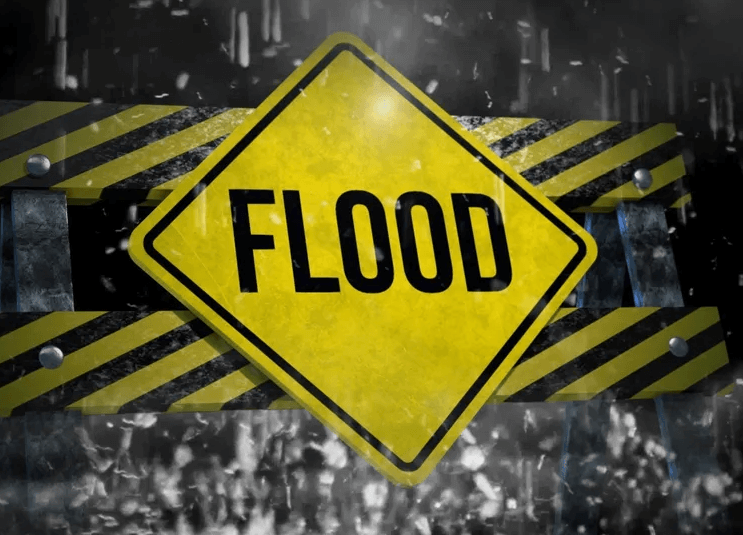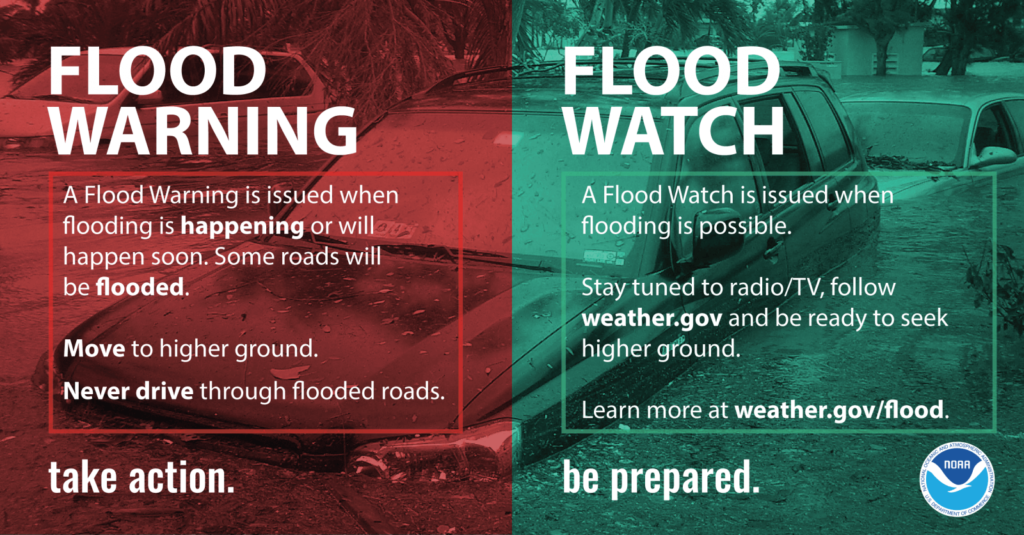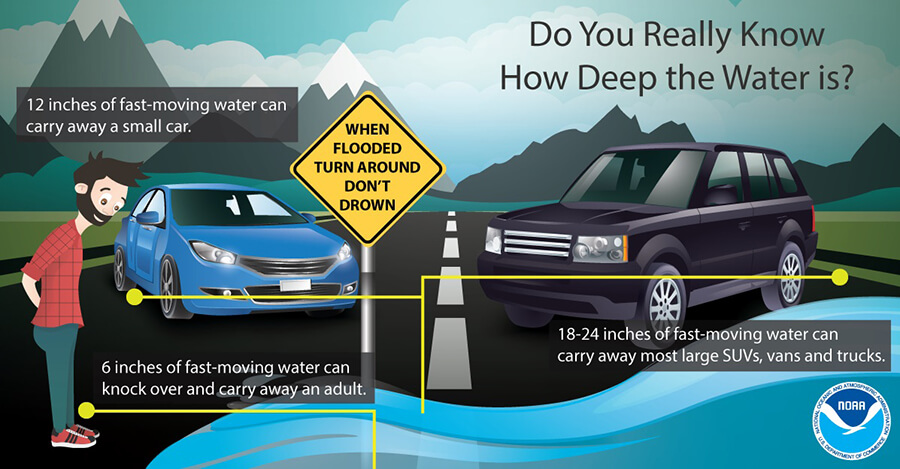It’s Flood Safety Awareness Month! We definitely get our share of rainfall, hurricanes, storm surge and rising sea levels in Florida. Flooding is a coast-to-coast threat in Florida and one of our most frequent hazards.
Be prepared by knowing what to do before, during and after a flood.
Flood Preparedness
-
Know Your Risk
Knowing your flood risk is the best way to prepare for flooding. Find out whether your home and/or business is in a flood-prone or high-risk area with FEMA’s Flood Map Service Center.
-
Create A Plan
It’s important to be able to communicate with your family, friends and staff members in the event of a flood. Decide whether you’re staying or evacuating. Make sure everyone knows the evacuation routes and everyone has a supply kit. Know how you’ll contact one another and reconnect if separated. Don’t forget to include your pets in your emergency plan. Remember that some evacuation shelters don’t accept pets. Check out FEMA’s Family Communication Plan.
-
Business Continuity Plan
According to the Federal Emergency Management Agency (FEMA), more than 40% of businesses never reopen after a disaster, 25% will close after a year, and 75% without a business continuity plan will fail. It’s important to have a Business Continuity Plan for your company, so that everyone understands it and have strategies in place in the event of a storm. Not sure how to create one? Check out our blueprint in the Importance of Business Continuity Planning.
-
Get Flood Insurance
According to Florida Flood Insurance.com, 25% of all flood claims come from moderate- to low-risk areas. You don’t have to live in a high-risk zone to be affected. Standard insurance policies do not cover flooding. Flood insurance takes 30 days to take effect, so purchase and review your plan in advance. You can get flood coverage under the National Flood Insurance Program (NFIP).
-
Gather Emergency Supplies
Create an emergency kit and be sure to have all the essentials including water, food and supplies. You should also have batteries, flashlights, first-aid kits, dry clothes, NOAA Weather Radio or other solar or battery-operated radio easily accessible. Make sure to keep any medications and copies of your critical information on hand in the event of an evacuation. Don’t forget supplies for your pets! Check out FEMA’s recommended supplies checklist.
-
Know the Difference Between a Flash Flood Warning and a Flash Flood Watch
Flash Flood Warnings are issued when flooding will happen soon or is currently happening. Take immediate action and move to higher ground, but remember not to drive through flooded roads. A Flash Flood Watch means a flood is possible in the area. Listen to your local weather stations and officials for news.
-
Protect Your Home and/or Business
Flooding can be unpredictable. It’s best to move any valuable items to a higher ground. Put important documents and valuables in a waterproof safe to ensure they don’t suffer from water damage. Declutter drains and gutters. Disconnect appliances. Locate switches for gas, electricity and water and turn them off. Place sandbags around your property to keep water out if needed.
-
Evacuate If Necessary
Plan your evacuation route in advance, so you’re prepared. Determine the safest and most efficient way to exit. Although, if there’s heavy rain and flooding, avoid evacuating. According to the Centers for Disease Control and Prevention, the most common flood deaths occur when a vehicle is driven into hazardous floodwater. Turn Around, Don’t Drown! Avoid driving or walking across flooded roads. Just six inches of fast-moving flood water can sweep an adult off of their feet. It only takes 12-18 inches to sweep away most vehicles in floodwaters.
-
Stay Informed
Download weather apps now, so you’re prepared when you need to be. Sign up for local alerts on your phone. Visit Ready.Gov Alerts and learn how to search for local alerts and weather apps. The FEMA app includes weather alerts, safety tips and disaster resources.
-
After the Flood
- Don’t enter the property until it’s safe. Ensure the power is off and emergency personnel have given the go-ahead. After the area is clear, put on protective gear. Wear gloves, masks and waterproof boots. Floodwaters can contain harmful bacteria, critters, snakes and other things that bite.
- Before you start trying to clean up, take photos and video footage of your home, business and belongings for your insurance claim.
- Call a licensed, professional flood/water damage restoration company to manage the cleanup. This is important to ensure proper dry-out, water removal processes and to prevent mold.
- Call your insurance agent to open an insurance claim
About Venture Construction Group of Florida
Venture Construction Group of Florida (VCGFL) is an award-winning construction and restoration company providing 24/7 emergency services, water mitigation, flood damage restoration, mold remediation and storm damage restoration services. As a licensed general contractor with over 20 years of experience, we provide expert assessments, 3rd party consulting, bids, estimates, scope of work and comprehensive repairs. With offices in Boca Raton, Ft. Myers, Naples, Orlando, Panama City Beach, Stuart, and Tampa, we help residents and businesses throughout the state.
RESOURCES
FEMA: Flood Map Service Center
FEMA: National Flood Insurance Program
FEMA: Family Communication Plan
Insurance Information Institute: In Case Of A Flood
Ready.Gov: Emergency Supply Kit Checklist
Ready.Gov: Emergency Preparedness Kit



